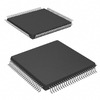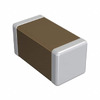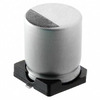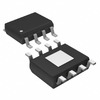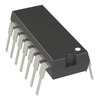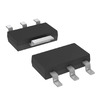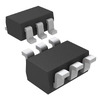What Are Analog and Digital Signals
In the expansive realm of electrical engineering, a pivotal component lies in the grasp and utilization of signals. These signals, fundamental in everything from rudimentary electronics education to the intricacies of circuit architecture, are the bedrock of understanding and application. This article delves deeply into the multifaceted nature of signals within electrical engineering, particularly focusing on the stark distinctions between analog and digital forms. We commence with basic definitions and types of signals, progressing to explore their varied applications and consequential effects across diverse circuit designs. Gradually, this exploration will unravel the layered complexity and underscore their pivotal role in contemporary electrical engineering.

Signals, within the sphere of electronic engineering, emerge as the crucial conduit for representing and transmitting information. They embody time-varying physical quantities, such as voltage or current, capable of conveying an array of information. This includes but is not limited to, ambient temperature readings, audio and video data, and the transfer of data bits between a microcontroller (MCU) and a standard logic gate integrated circuit (IC). The multifarious nature of signals manifests in their very form: they may present as an ever-evolving analog signal or assume the discrete state of a digital signal. Analog signals are distinguished by their ability to assume innumerable values within a specific voltage range, and their continuity adept at capturing the minutest shifts in physical quantities. Digital signals, in stark contrast, are constrained to just two states: high and low.
In the intricate world of signal diversity, it's crucial to recognize that digital signals seldom achieve the ideal states of 0V or 5V. This stems from the inherent nature of digital electronic devices, like logic ICs, which operate within specific threshold regions to discern a signal's status as high or low. Consider, for instance, certain devices where signals below 1.35V are deemed low, and those above 3.15V, are high. Sandwiched between these thresholds lies a gray zone. In this ambiguous region, the device's response wavers, potentially triggering logic errors. This nuanced setting's purpose? To mitigate false readings triggered by noise or minor voltage fluctuations. Practical applications demand that designers heed these thresholds, ensuring signals stay within the designated safe zone. Conversely, analog signals eschew such rigid demarcations. Their domain spans a continuous spectrum, say from 0V to 5V. Even the minutest voltage shift – picture a change from 0.00001V to 4.9999V – might be pivotal. Such continuity renders analog signals ideal for applications demanding ultra-precise responses to subtle fluctuations, like audio amplification or signal modulation.

Difference Between Analog Signals and Digital Signals
Diving into the realm of electrical engineering education, novices often first encounter purely digital circuits. Yet, foundational learning typically begins with analog circuits. These circuits are the sum of elementary components – resistors, capacitors, diodes – and their functionality is rooted in analog technology. Take the basic analog circuit, a voltage divider: a mere pair of resistors is all it takes to divide voltage proportionally to their resistance. Or consider a simple oscillator circuit, comprising a transistor and a capacitor, which generates a continuous waveform signal. In scenarios demanding more complexity, such as in radio receivers or modems, analog circuits evolve. Here, they delve into more intricate territories involving frequency selection, signal amplification, and filtering.
Analog circuits shine in efficiently tackling specific tasks. Their design, however, is a labyrinth of complexity, demanding not only extensive practical experience but also a robust foundation in theoretical knowledge. This complexity is further compounded by intricate mathematical modeling and calculations, delving into realms like Fourier transforms and filter design theory. Contrastingly, constructing and troubleshooting digital circuits is a walk in the park. Many digital ICs are ingeniously crafted to replicate the functions of analog circuits but with far greater ease. Take digital signal processors (DSPs), for example, capable of executing complex signal processing tasks that would otherwise require convoluted analog setups.
When it comes to resisting interference, analog circuits are more vulnerable. Electromagnetic disturbances, and temperature variations – can wreak havoc, leading to signal distortion and performance loss. Digital circuits, on the other hand, stand tall against such challenges. They use high and low levels to represent information, granting them a shield against minor noises and interference. Yet, this robustness comes at a price – digital circuits often demand costlier precision manufacturing and more elaborate logic designs.
Most digital circuits embrace a synchronous design. They rely on a unified clock signal to synchronize the operations of various components, ensuring the system works in harmony. Analog circuits differ starkly; they are mostly asynchronous, capable of reacting instantaneously to input signal changes – a critical trait for managing ever-changing signals.
Diving deeper into the dichotomy of signal diversity in electrical engineering, the differences between analog and digital signals become strikingly clear. Each type of signal, with its unique attributes, carves out its niche. Analog signals, with their continuous change and high precision, and digital signals, known for their robustness and ease of processing, each play pivotal roles. Understanding these signals, their nature, and their operation is not just a cornerstone skill for electrical engineers. It's a vital cog in the wheel of design and innovation.
About us
ALLELCO LIMITED
Read more
Quick inquiry
Please send an inquiry, we will respond immediately.
→ Previous

In the realm of modern automotive electronics, the spotlight shines on in-vehicle network technology, with the controller area network (CAN bus) being its pulsating core. More than a mere communication tool, the CAN bus is a revolutionary force. It reshapes interactions among microcontrollers, engin...

An operational amplifier, at its core, is a high-performance voltage amplifier, integral to a myriad of electronic systems. This device pivots on a design philosophy that leverages inductors, capacitors, and resistors. These components intertwine in a dance of sophistication, orchestrating voltage g...
→ Next

A Deep Dive into Oscilloscopes Simplifying Testing of CAN Bus Networks
on January 5th

Operational Amplifiers: Inverting Vs Non-Inverting Topologies
on January 4th
Popular Posts
-

What is GND in the circuit?
on January 1th 2937
-

RJ-45 Connector Guide: RJ-45 Connector Color Codes, Wiring Schemes, R-J45 Applications, RJ-45 Datasheets
on January 1th 2499
-

Fiber Connector Types: SC Vs LC And LC Vs MTP
on January 1th 2089
-

Understanding Power Supply Voltages in Electronics VCC, VDD, VEE, VSS, and GND
on November 9th 1890
-

Comparison Between DB9 and RS232
on January 1th 1761
-

What Is An LR44 Battery?
Electricity, that ubiquitous force, quietly permeates every aspect of our daily lives, from trivial gadgets to life-threatening medical equipment, it plays a silent role. However, truly grasping this energy, especially how to store and efficiently output it, is no easy task. It is against this background that this article will focus on a type of coin cell battery that may seem insignificant on the...on January 1th 1712
-

Understanding the Fundamentals:Inductance Resistance, andCapacitance
In the intricate dance of electrical engineering, a trio of fundamental elements takes center stage: inductance, resistance, and capacitance. Each bears unique traits that dictate the dynamic rhythms of electronic circuits. Here, we embark on a journey to decipher the complexities of these components, to uncover their distinct roles and practical uses within the vast electrical orchestra. Inductan...on January 1th 1652
-

CR2430 Battery Comprehensive Guide: Specifications, Applications and Comparison to CR2032 Batteries
What is CR2430 battery ?Benefits of CR2430 BatteriesNormCR2430 Battery ApplicationsCR2430 EquivalentCR2430 VS CR2032Battery CR2430 SizeWhat to look for when buying the CR2430 and equivalentsData Sheet PDFFrequently Asked Questions Batteries are the heart of small electronic devices. Among the many types available, coin cells play a crucial role, commonly found in calculators, remote controls, and ...on January 1th 1550
-

What Is RF and Why Do We Use It?
Radio Frequency (RF) technology is a key part of modern wireless communication, enabling data transmission over long distances without physical connections. This article delves into the basics of RF, explaining how electromagnetic radiation (EMR) makes RF communication possible. We will explore the principles of EMR, the creation and control of RF signals, and their wide-ranging uses. The article ...on January 1th 1538
-

CR2450 vs CR2032: Can The Battery Be Used Instead?
Lithium manganese batteries do have some similarities with other lithium batteries. High energy density and long service life are the characteristics they have in common. This kind of battery has won the trust and favor of many consumers because of its unique safety. Expensive tech gadgets? Small appliances in our homes? Look around and you'll see them everywhere. Among these many lithium-manganes...on January 1th 1509
